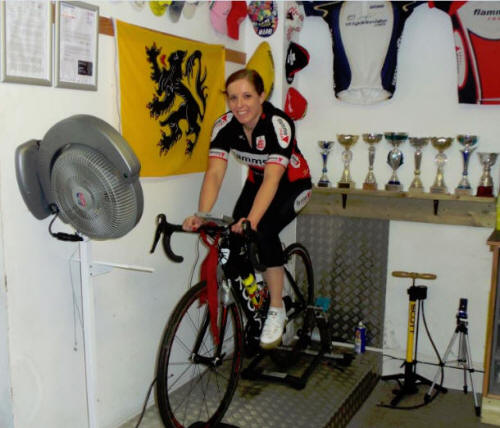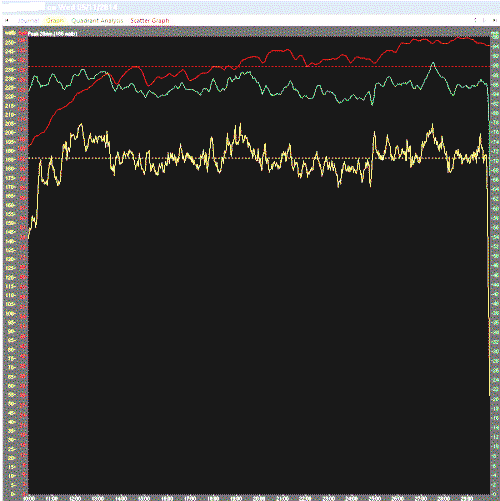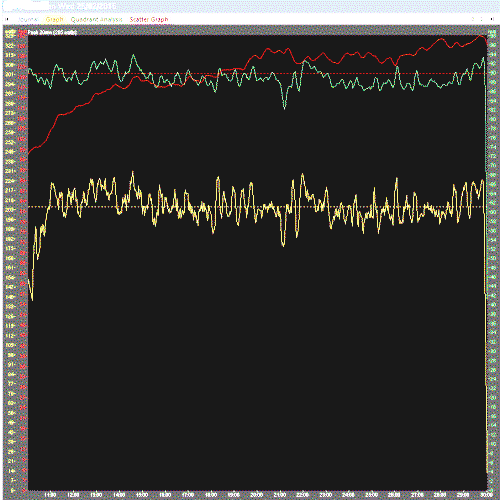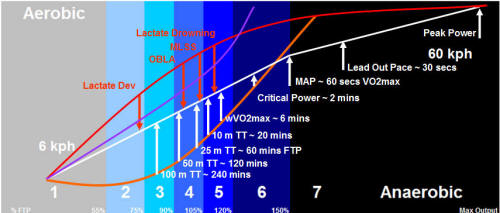FAQ ~ Sweet Spot Session

Sweet Spot Efforts ~ Should leave you smiling
The nice little "fast cruise" point between Tempo and Lactate
Tolerance
Kat Guillemot ~ trying hard to not go hard
Sweet Spot Sessions ~ seem a bit too easy. I
realise they are only short sessions but I'm not sure I'm doing them
right; can you give a little more guidance as to the correct level?
Asked by most people...
The devilishly simple Sweet Spot (or Sweat Spot) Sessions, are ridden at around 90% FTP and perform three, vastly different, main functions within our programmes.
The first is to give the alpha male (and female) athletes something to do on a Wednesday! The biggest problem I have when coaching people is to get them to slow down and/or do less! This session is a perfect tool for getting the more driven amongst us to do exactly that.
The second is to set an athlete self-paced baseline and to track it throughout the year to monitor fitness and fatigue. This session gives us a huge amount of physiological information for very little effort.
Thirdly, we use it to add a little CTL (Chronic Training Load) to the programme, without adding undue fatigue or stress.
This session becomes a little mind and body sanctuary in the maelstrom that can be some of our more focussed programme sessions.

Sweet Spot Effort November 5th ~ 186 watts @ 130 bpm
Baselining
You can see from the power/heart trace above, that this athlete rode
their first sweet spot session of the training year, at an average power of 186 watts with
an average heart rate of 130 bpm.
Remember; power and heart rate figures mean nothing, if you don't know the rider's age, gender, weight, resting and max heart rate. So don't compare these figures to yours or anyone else's!
Once we remove the first five minutes of the session, to allow the heart rate to stabilize, we can see their de-coupling, cardiac drift, was a little under 5%. This is a reflection on aerobic efficiency and is a good marker to latch on to.
Track and Analyse
As you progress through the programme, or training year, you can
return to these sessions to ride at a self-paced, perceived effort,
to just run a objective weather eye over your progress.
To ensure sustainable progression, most of our quality sessions are ridden at the ragged edge. The fitter you get, the harder you have to train to get fitter; you will never catch up.
So sometimes you need a steady-state barometer to give you perspective on how your body is reacting to the incessant pounding from the overload sessions. This is where the Sweet Spot pays dividends.
Here's another Sweet Spot session from our intrepid rider, later in the training year. Ridden at exactly the same "perception level" as all the others they had previously done.
Without this sanity check, it's easy to miss this information unless you deliberately look for it. But here we have some very interesting results...

Sweet Spot Effort February 25th ~ 205 watts @ 121 bpm
At the end of their twelve week Base Build Period, our rider has increased their power from 186 to 205 watts; a not insignificant 9.3% increase in effectiveness.
Heart rate has dropped from 130 to 121 bpm; a substantial 7.5% decrease. Or to look at it another way, a 7.5% increase in efficiency!
Their maximum heart rate in the second test was only one beat above their average in the first. A double whammy of going faster and harder for less physiological effort. How good is that?
And by removing the stabilization period from the start of the session, we see that cardiac de-coupling came in at well under 4%. This is where it gets "interesting".
Some will say "big deal" de-coupling dropped from 5 to 4%; but percentages are strange things, Which is why politicians use them so much. We may have dropped one percentage point, but that's a 20% decrease in de-coupling. Can it get any better in twelve weeks?

The Sweet Spot is around the middle of Zone 4
between OBLA and 25 mile TT pace
 Where is the Sweet Spot?
Where is the Sweet Spot?
The Sweet Spot point is different for everyone. We
don't all fit the nice physiological
template and bell curve the research scientists like to produce for
us.
When you finish, you should be settled, glowingly warm, but not boiling hot, and with a little nagging thought that "I could have gone harder". If you have, that's perfect.
You are building training load by adding around 30-40 TSS points to your weekly total, but without the intensity to cause fatigue. You are doing a Recovery Session (Plus).
A Sweet Spot Session will help you flush out your legs from yesterday's session and prepare them for the one coming up tomorrow. If you can go hard, you didn't go hard enough yesterday. If you do go hard, you will compromise the session for tomorrow. Less is more...
It is not training in the true sense of the word; but done properly it's a great session and one that gives so much more than it takes.
 Alternative
Comparison
Alternative
Comparison
An alternative to measuring the "progression" of power, is to
measure the progression of speed.
On a turbo, speed is a good metric to use, as it normally (depending on your turbo) doesn't have a huge variance with power as there is on the road. Power cubes, with the square of speed.
Don't try to compare speed and power on the road.
You can also, revisit your first effort. Instead of riding to a perception level, this rider could have ridden (at the end of 12 weeks) a test effort of exactly the same wattage as their first, and monitored their heart rate and/or perception.
This method is slightly flawed, but is good to use as a "recovery session" to really let you see how far you've come in a short time.
If they had ridden at the same 186 watts as they did in February it would have almost felt as though they were standing still. Now, that's a sign of progress and one that proves whatever you have done has worked.!








